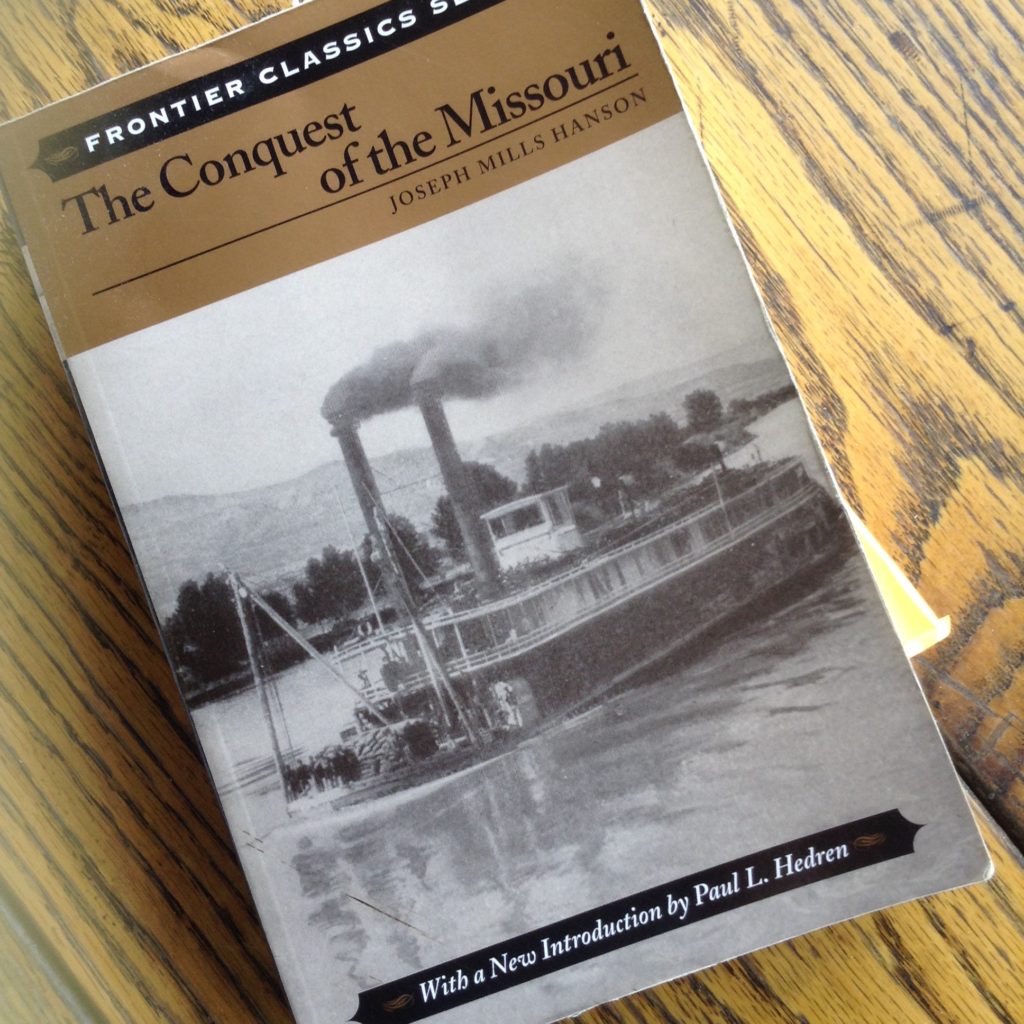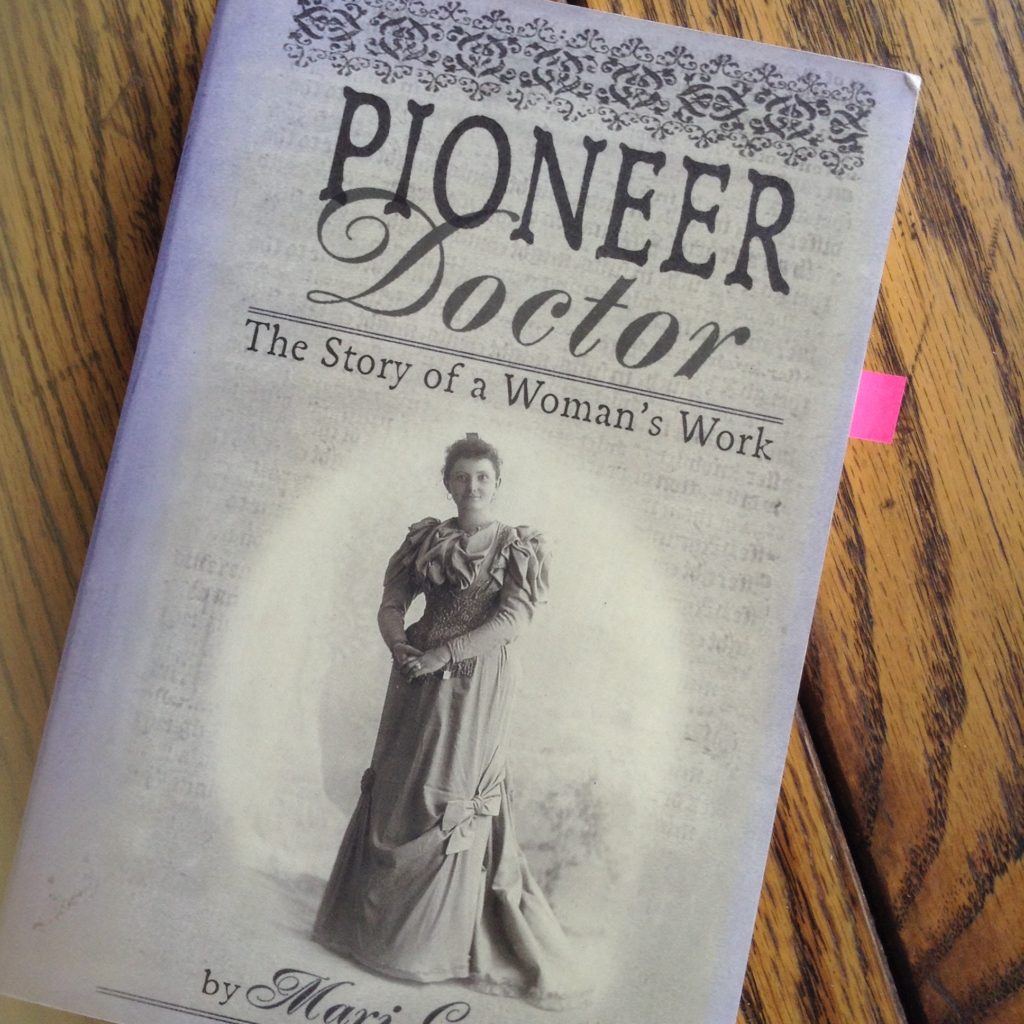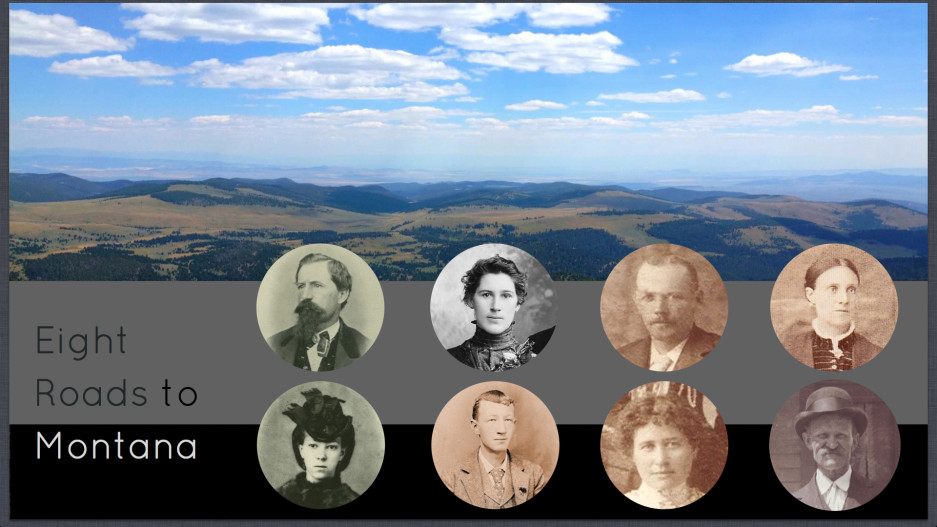Over the last few years, since I “retired” and have more time for reading, I’ve learned that historical nonfiction books are a great way to help fill in the blanks of our ancestor stories.
Let me give you a few examples.
The Conquest of the Missouri by Joseph Mills Hanson
My great great grandmother Eva (Specht) Rumping and her one year old daughter Mary Rumping (my great grandmother) travelled from St. Louis, Missouri, to Ft. Benton in the Montana Territory in 1879 aboard the steamer Rosebud. While doing a bit of research on steamboat travel during that time period, I came across this book – The Conquest of of the Missouri by Joseph Mills Hanson.

The book is primarily the story of the life of Captain Grant Marsh, who was at one time captain of the Rosebud. Although my great grandmother Mary wrote about their 3-month-long journey aboard a steamboat (click here for a blog post about her journal entry), this book certainly gave me so much more detail about the challenges they most likely encountered on that trip. I wrote more about what I learned from this book in an earlier blog post – click here.
Pioneer Doctor: The Story of a Woman’s Work by Mari Graña
This book is the story of Dr. Mary Babcock (Moore) Atwater, written by her granddaughter Mari Graña.
At one point during her fascinating life, Dr. Atwater (“Mollie”) was a doctor in Marysville, Montana. Marysville is where my great great grandparents settled in the Montana Territory, beginning in the late 1870s. Although Dr. Atwater didn’t arrive in Marysville until the 1890s, the town was still a bustling gold-mining camp.
After arriving in Marysville, the author describes Mollie’s first impressions as she walked down Grand Street . . .
Marysville, that fall of 1892, was perhaps the richest little town in the United States. There was a pulse of excitement in the air. The sense of its own prosperity pervaded the town. And expectation–expectation of the fortune to be made in the mines . . .
Much of the town, however, was not fancy houses. There were an inordinate number of saloons, and here and there were piles of garbage along the road and in the side alleys. For all the town’s riches, the practical aspects of urban life left a lot to be desired.
Soon after, Dr. Atwater spotted this sign above a doorway . . .
THE MOUNTAINEER, “THE GREAT ADVERTISING
MEDIUM OF MONTANA.”
WM. C. MAHURIN, PROPR.Mollie smiled at the blatant self-importance; yet it did seem appropriate to the town’s sense of itself.
Talking to her new employer over coffee earlier that morning, she noted “the incessant thumping of a stamp mill” as it “pulsed through the town like a giant hammering heartbeat.”
Tell me,” she asked, “does the pounding ever stop?”
Frankly, no–except on Sundays. There are mines and mills all over these hills. But you’ll get so used to the thumping that after a while you’ll only notice it when it stops. And at night the rhythm lulls one to sleep.
I admit I had given some thought as to what Marysville was like in its heyday, but I never thought about the “incessant thumping of a stamp mill”. Click here for a YouTube video of what appears to be a five-stamp mill. (And if you’re really interested, click here for a YouTube video that shows a demonstration of a model stamp mill.) The Drumlummon, the largest but by no means the only, stamp mill in Marysville at the time had 110 stamps going day and night.
I really cannot imagine that. Day and night, except Sundays. Month after month, year after year. It certainly makes me appreciate in vivid detail what life in a booming gold town must have felt like.
The Road to Virginia City : The Diary of James Knox Polk Miller by Andrew Rolle
 The book I’m currently reading is The Road to Virginia City, which chronicles the Overland Trail adventures of Jams Knox Polk Miller from 1864 to 1867. Again, I came across this book when I became curious about how my great grandfather David Lyman Blacker made his trip from St. Joe, Missouri, to Denver, probably in about 1860, and then on to Virginia City, Montana Territory, in the summer of 1864.
The book I’m currently reading is The Road to Virginia City, which chronicles the Overland Trail adventures of Jams Knox Polk Miller from 1864 to 1867. Again, I came across this book when I became curious about how my great grandfather David Lyman Blacker made his trip from St. Joe, Missouri, to Denver, probably in about 1860, and then on to Virginia City, Montana Territory, in the summer of 1864.
Just a few excerpts from this book beautifully illustrate the point of this blog post.
Early on in his journey, James spent a few days in St. Joe, Missouri where he stayed at the Patee House (now a National Historic Landmark). There he partnered with two other men with whom he continued his journey. The following financial arrangement was made on August 13, 1864 . . .
They are to put in $325 towards getting up an outfit to cross the plains and I am to furnish the balance of about $425. I to pay them .40 cents per lb. for my baggage over 25 lbs., that is their share of it as 325 is to 425. Found their names to be Geo. W. Brown & Edward Rushlow & from Rochester, N.Y. Upon concluding an arrangement we purchased a span of Bay horses for $400, Harness $35, and I purchased a fine saddle horse as before concluded, $200, looked at some wagons, made some purchases & returning to the Hotel.1
My great grandfather lived in St. Joe for several years prior to moving further west, first to Denver in about 1860 and ultimately to the Montana Territory in the summer of 1864. It seems likely he would have likewise purchased supplies for his trip, and possibly even partnered with several others similar to James, in St. Joe.
Jame and his two partners finally began their trip in earnest on August 16, 1864 . . .
Arriving at Walthena a small town the chief point of interest being the well where we procured water for our horses, and a grocery store where we purchased a faucet for our Molasses Keg.
Interesting.
The woman my great grandfather David Lyman Blacker eventually married in 1871 (my great grandmother Ada Cordelia Buchenau) was from a town in Kansas called Wathena. A footnote in the book describes “Walthena” as being “one and one-half miles south of Bellemont near a bend of the Missouri River.” I was unable to determine the location of Bellemont but Wathena is definitely “near a bend of the Missouri River” and only about 7 1/2 miles due west of St. Joe. So it seems likely they would have been able to make that distance on the first day of their trip.
September 11th . . .
Passed the grave into which eleven bodies were thrown & buried, killed by Indians about three weeks ago. They were attacked by 500 Indians and all but the wagon master massacred. No names over the grave. Nought to tell who they were and only a mound and stick to tell that any one was there buried. They are upon the roadside in a mound slightly elevated and partly surrounded by a ravine.
On September 25th . . .
Met train of wagons from Virginia City crowded with men returning, not having made their expected strikes and returning in disgust–and in want. Had to guard mules untill [sic] after supper. After taking a light supper I reclined to the Arms of Morpheus2 with my arms (Fire Arms) under my pillow.
September 26th . . .
When out of wood we used weeds, sticks, and Buffalo Chips.
September 29th . . .
Supped on Antelope meat, Potatoes, Onions, Bread, Syrup & coffee.
October 1st . . .
Ed proposed to take a drink of whiskey and not withstanding my declining fixed enough for both and, in my declining, drank it all. Shortly afterwards, disputing about some trifling matter, he became half crazy with anger . . . I made up my mind that one of us would need take a bullett [sic] before it was quieted as that is the fashionable way to settle disputes in this country. Waiting untill [sic] he had “blowed out” I informed him that he acted as if under the influence of liquor but that if he wanted to make a quarrel it must be a “serious” one as I would not descend to a fist fight. This somewhat cooled him and gave me an opportunity to talk to him and in a few moments the man was crying as if his heart would break.
October 3rd . . .
Purchased a ticket here for $107 to Salt Lake. Slept all day among the straw on the bottom of the stage, I being the only passenger. Dined at North Platte, good dinner. Bought a Buffalo robe for $8.
October 4th . . .
We are now across the Great Alkali Desert watered by Bitter Creek. The water is miserable and in many places can not be used, being fatal to man & beast . . . Reached Rock Springs at about 11 o’clock, 15 miles from Salt Springs. Bought a pint of whiskey for which I paid $5 and spilled 3/4 of it. Weather warm. No people in Mail Stations, no plant but sage. We meet hundreds of people almost daily coming from Virginia City out of provisions, some in starving condition. Arrived at Green River where the land lady, being sick, had “pickings” for dinner. Rather tough.
October 7th . . .
. . . reached Salt Lake at about 11 o’clock.
James stayed in Salt Lake City for six months before moving on to the Montana Territory. He arrived there in the summer of 1865, about a year after my great grandfather arrived. I look forward to reading his adventures for that portion of the trip between Salt Lake and Virginia City!
But as you can see, I already have a very detailed idea of what that trip must have been like for my great grandfather.
In the future I plan to read nonfiction accounts of Irish and Swedish immigrants to the United States in the late 19th century. And recently I learned that one of my ancestors may have been a French Huguenot. I know nothing about French Huguenots. At least not yet!
How about you? Have you read any nonfiction historical books that relate either directly or indirectly to your ancestors? I’d love to hear about it!
© 2017 Copyright by Lark M. Dalin Robart. All rights reserved.
NOTES
- According to a footnote, “It was standard procedure for western parties to go to towns near the Missouri River like St. Joseph . . . to be outfitted for the journey by wagon, caravan, or pack train across the plains.” ↩
- “Sound asleep, most likely dreaming”, per https://www.bookbrowse.com/ ↩


That question also occurred to me. And yes, I also love to visit historical places. It feels a bit like time traveling.
Thanks for reading the post and commenting!
I love this! I wonder if the Steamshio Rosebud gave the name to Rosebud County between Forsyth and Miles City. Also, I loved exploring Virginia and Nevada City this fall. Such a neat way to feel closer to the past.